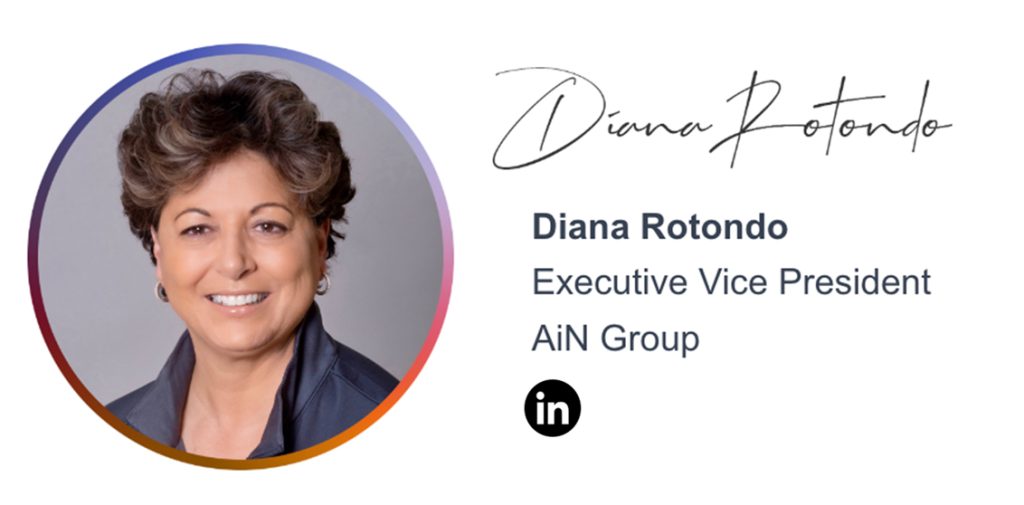Welcome to the latest edition of AiN Executive Insights! I’m Diana Rotondo, Executive Vice President of AiN Group, and I’m excited to guide you through this month’s essential economic updates. In this edition, we’ll look at the downward revisions of 24Q2 GDP growth estimates and the significant decline in job openings.
We’ll explore the surprising rise in consumer confidence, despite widespread recession fears, and discuss how inflation is impacting American households. We’ll also delve into the drop in personal savings rates, challenges in the banking sector, and the resilience of the equity market amid rising interest rates.
Additionally, we’ll cover wealth distribution trends, investment preferences among different income levels, and the states with the fastest and slowest GDP growth. We’ll also highlight changes in consumer behavior, including the rise in private-label grocery spending and the competitive landscape among top carbonated beverage brands.
Join us as we unpack these key developments and navigate through the intricacies of our economy together.

Gauging Growth
Estimates of 24Q2 GDP growth have been rapidly revised downward as more data comes in. Initially, the Atlanta Fed predicted a robust 4.2% growth in mid-May, but now expects only a 1.8% increase. Similarly, the New York Fed has adjusted its forecast from 2.75% to 1.8%, and the St. Louis Fed projects a mere 1.2% growth, down from 1.4%. Averaging these estimates gives us a 1.6% growth rate, indicative of economic stall speed (source: Federal Reserve).
Open Opportunities
Job openings in April dropped to 8.059 million, a significant decline from 8.355 million in March and a stark contrast to 9.904 million a year ago. At its peak in March 2022, there were 12.182 million job openings. The ratio of job openings to job seekers has decreased to 1.2, returning to pre-Covid levels from its peak of 2.0 in March 2022 (source: BEA).
Consumer Confidence
May saw a surprising increase in consumer confidence. Both the “present situation” and “expectations” indices rose, despite 67% of respondents anticipating a recession within the year. Additionally, consumers’ financial conditions worsened and inflation expectations climbed. Interestingly, 48.2% of respondents expect higher stock prices in 12 months, contributing to the improved sentiment (source: Conference Board).
Recession Rationale
Despite not being in a recession, a majority of Americans believe we are. Additionally, 49% think the S&P 500 is down for the year (it’s up 12.2%), and 49% believe unemployment is at a 50-year high (it’s not). High inflation, the top concern for 55% of Americans, is likely driving these misconceptions and straining household budgets (source: Gallup).
Constricted Consumption
The personal savings rate in April was just 3.6%, a low seen only in 2022 and during the lead-up to the Housing Bust. Excess Covid savings have been depleted, and the labor market is slowing. Real disposable income growth, a key driver of consumer spending and 69% of GDP, has fallen from 5.3% year-over-year in June 2023 to 1% in April 2024 (source: BEA).
Bank Blues
From 2008 to 2019, total unrealized bank gains/losses on investment securities fluctuated between -$75 billion and +$75 billion. In 2020, unrealized gains soared to $100 billion due to declining rates. However, with rising rates, unrealized losses jumped to -$700 billion in Q3 2022 and were still at -$500 billion through Q1 2024. Despite this, banks remain well-capitalized, and these losses are expected to shrink as rates fall (source: FDIC).
Equity Excellence
Typically, rising rates negatively impact stock prices. However, since October 2023, the S&P 500 has surged by 26%, largely due to an increase in the forward P/E ratio from 18x to 21x. Tech mega-caps, which hold significant cash reserves, are less affected by higher rates and have driven much of this growth (source: The Daily Shot).
Withering Withdrawals
During the Housing Bust, home prices surged, leading to a rise in revolving home equity loans from $185 billion in 2002 to $603 billion in 2009. Despite recent home price increases, the value of revolving home equity loans has stagnated at $250 billion per year since Q3 2021 (source: Federal Reserve).
Rate Reset
The percentage of home mortgages with interest rates above 6% has increased from nearly zero in early 2022 to 14% and is rising. Meanwhile, the percentage of mortgages with rates below 3% has declined from over 40% in late 2021/early 2022 to just over 30% today. Although higher rates are challenging, households tend to adapt over time (source: Black Knight).
Asset Accumulation
From 2020 to 2023, the wealth of the top 1% by income rose from $25.6 trillion to $35.6 trillion, a 39% increase. The 40%-60% income group saw a 44% increase, from $10.5 trillion to $15.1 trillion, the highest percentage growth. The bottom 40% saw assets rise by 35%, from $9.83 trillion to $13.3 trillion (source: Federal Reserve).
Portfolio Percentages
Among households earning less than $40,000 annually, 33% consider real estate the best long-term investment. This percentage increases to 36% for households earning between $40,000 and $100,000, and to 40% for those earning over $100,000. For equities, the percentages are 14%, 21%, and 31%, respectively (source: Gallup).
State Stats
North Dakota led the nation in real GDP growth in 2023, with a 5.9% increase. Texas followed closely at 5.7%, then Wyoming at 5.4%, and Alaska and Oklahoma both at 5.3%. These states benefited significantly from mining activity. Nationally, GDP grew by 2.5%. Delaware was the worst-performing state, with a GDP decline of 1.2% (source: BEA).
Bargain Battle
Walgreens is reducing prices on 1,300 items, joining retailers like Amazon Fresh, Target, and Walmart, as well as fast-food chains like McDonald’s, Wendy’s, and Burger King in offering summer deals. Consumers are now spending a record 22% of their grocery budget on private-label items (source: Quartz).
Cola Competition
In the battle of carbonated beverages, Coca-Cola remains the most popular with a 19.18% market share. Dr. Pepper has climbed to second place at 8.34%, followed by Sprite at 8.09% and Diet Coke at 7.82%. The overall Pepsi brand, including Pepsi, Diet Pepsi, and Pepsi Zero Sugar, still holds the number two spot (source: Beverage Digest).
